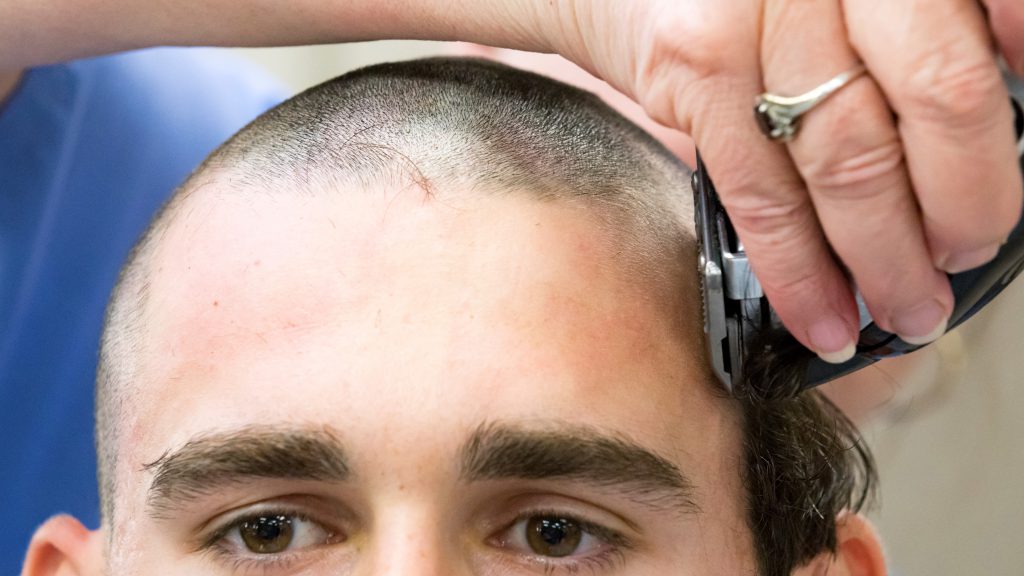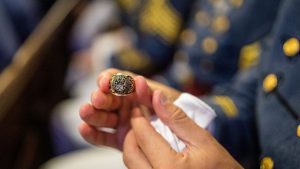
Citadel Commandant retired Navy Capt. Geno Paluso, ’89, is implementing a change to the current grooming guidelines outlined in the Blue Book. Under the new guidelines fourth-class male cadets will get one initial fourth-class haircut at matriculation. After the initial haircut, they will follow existing upper-class haircut standards. Fourth-class female cadets will follow U.S. Army standards and will not be required to cut their hair at matriculation. These changes will go into effect in the 2019-2020 academic year.
The new policy follows Department of Defense standards and will improve the recruiting of women and give the Corps of Cadets a more professional look.
“I spent 25 years in the Navy,” said Paluso, “and I don’t think The Citadel should have a stricter grooming standard than the Department of Defense—the very people defending our nation, our freedom and our right to have this institution.”
In the 1997 Blue Book the male haircut regulation changed from one initial freshman-standard haircut to a yearlong freshman-standard haircut. The return to pre-1997 regulations means a cost savings and an improvement in the quality of life for cadets.
Paluso remembers his own freshman haircut in 1985. “We were all in a race to see who would be the first one to part his hair,” Paluso said.
In July 1996 before the first group of women entered The Citadel, the Board of Visitors approved a policy that said that women cadets must have “a distinctive haircut.” For fourth-class women that haircut was a pixie-style haircut. Upper-class females were allowed to have slightly longer hair that could not touch the top of their dress blouse. In the 2008-2009 academic year, the regulations changed to allow upper-class women to have long hair worn in a bun that met the Department of Defense grooming standards.
The new standard for upper-class women, however, meant that sophomore women growing their hair out have an unruly mop that requires a lot of attention and a lot of bobby pins.
“Good for the women who were willing to come here and cut their hair, but the haircuts just look bad,” said Paluso.
A look back at cadet regulations from 1849 shows that hair standards were essentially unchanged for almost a hundred years. There was no fourth-class haircut. Regulations prohibited long hair, mustaches and whiskers. In 1956, the regulations changed to prohibit sideburns, and it was not until the 1960s that the buzz cut was given to freshmen cadets. It was at this same time that the freshman moniker “knob” began to replace the terms “plebe” and “rat.”
Gen. Glenn M. Walters, ’79, who served as assistant commandant of the U.S. Marine Corps before he became in the 20th president of The Citadel in October, is very familiar with Department of Defense standards.
“I support Capt. Paluso’s decision wholeheartedly,” said Walters. “In fact, I asked him to make the change as soon as possible. To be competitive as a college, we need to be current, and hairstyles should not define who we are.”

 Stephanie Fye named first-ever director of advising at The Citadel
Stephanie Fye named first-ever director of advising at The Citadel Citadel alumni make rings a reality for deserving cadets
Citadel alumni make rings a reality for deserving cadets First small group of cadets return to campus
First small group of cadets return to campus

